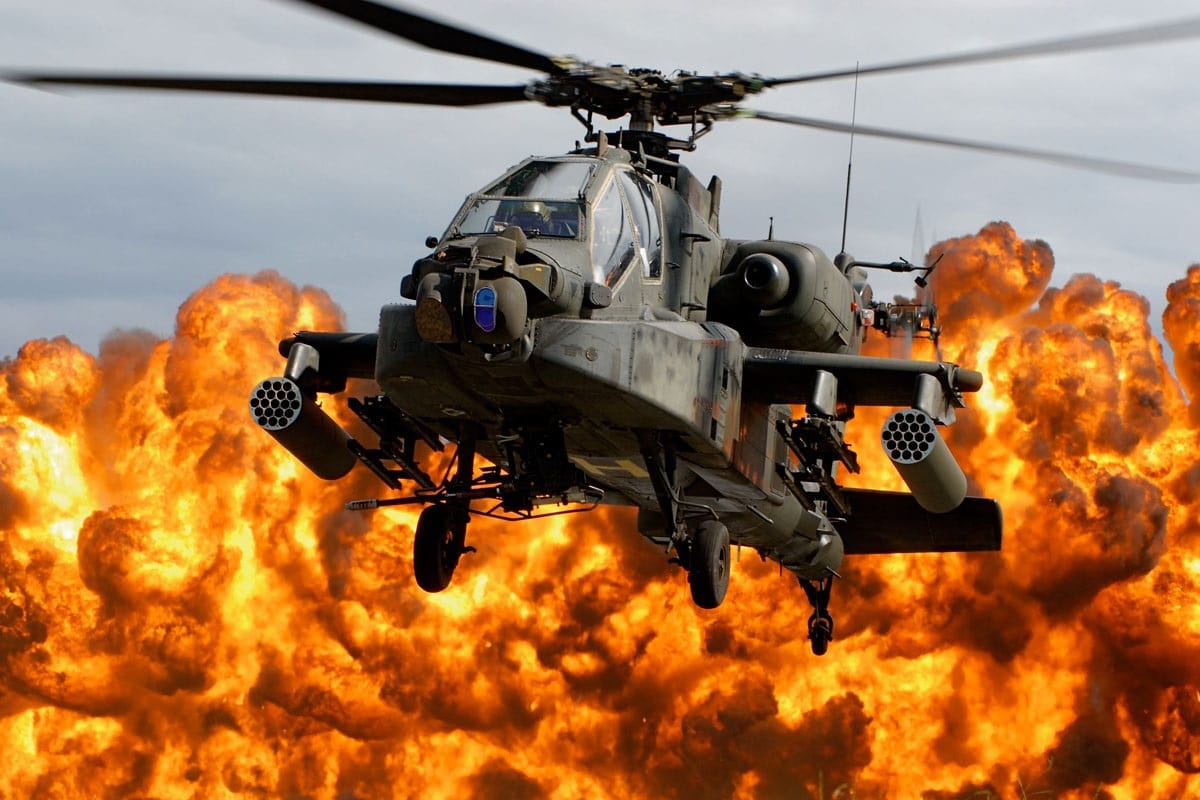Last month, American manufacturing giant Boeing Co. announced it had signed a deal with the U.S. Army and international client states to design 184 AH-64E Apache attack helicopters. The U.S. will receive 115 of the new choppers and the remaining 54 airframes will be delivered to Australia and Egypt.
Boeing’s latest announcement followed a significant milestone achieved by the Apache.
The Army’s formidable chopper surpassed five million flight hours, a feat that proves the airframe is one of the most capable and reliable attack helicopters across the globe.
An overview of the Apache’s history
In the early 1970’s, the U.S. Air Force and Marine Corps’ projects to develop the A-10 Thunderbolt II “Warthog” and the Av-8A Harrier were well underway. The Army desired an anti-armor attack airframe that they could call their own. Various manufacturing giants submitted proposals to be considered by the Army, including Bell, Boeing, Lockheed and Hughes Helicopters.
By 1975, the Army’s YAH-64 prototype took its maiden flight. Within a year, Hughes (which would eventually become part of McDonnell Douglas) was awarded a full-scale development contract with the Army.
The AH-64 Apache has a four-blade main rotor and a four-blade tail rotor. Equipped with shielding between the cockpits, the Apache is designed to ensure that at least one crew member could survive an attack. The helicopter sports around 2,500 pounds of protection and features a self-sealing fuel system to help protect the airframe and crew against ballistic projectiles. In 1992, the Apache AH-64D Longbow helicopter first flew as an upgraded variant of the original chopper.
The Longbow’s fire control radar and advanced avionics suite enables pilots to more rapidly locate, classify and engage adversarial targets in nearly all-weather conditions, as outlined by Boeing.
The Apache family of choppers is here to stay
Perhaps the most significant feature the Apache provided its pilots upon introduction to service was its helmet mounted display. As explained by Military, “Integrated Helmet and Display Sighting System (IHADSS); among other abilities the pilot or gunner can slave the helicopter’s 30 mm automatic M230 Chain Gun to his helmet, making the gun track head movements to point at where he looks.”
The Apache’s standard for performance for aerial gunnery is to make at least 1 hit for every 30 shots fired at a range of roughly 800-1,200 yards. Boeing is currently upgrading the latest E-variant Apache airframe to sport new software and the Army’s improved turbine engine.
In early March, the Apache chopper achieved an important milestone. The Army’s helicopters have officially reached five million flight hours, which is equivalent to flying nonstop for more than 570 years. “From the AH-64A in 1984 to today’s AH-64E Version 6, or v6, the Apache has grown in leaps and bounds — time and again exceeding expectations and redefining the capabilities of the platform. The Apache has proven to be an extremely lethal attack helicopter platform as well as a very powerful and effective Reconnaissance platform,” Boeing stated.
Similar to other infamous American-made platforms like the M1-Abrams, the Apache was initially designed for the Cold War but has remained a relevant and critical airframe through various wars over the last decades it has been in service.
The Apache family of helicopters will continue to lead the Army’s attack airframes for years to come.
MORE: Something Is Wrong With Kamala Harris
MORE: Video – Ukraine Has Massive New NATO ‘Cannon’ Ready To Fight Russia
MORE: Could Joe Biden Get Impeached?
Maya Carlin, a Senior Editor for 19FortyFive, is an analyst with the Center for Security Policy and a former Anna Sobol Levy Fellow at IDC Herzliya in Israel. She has by-lines in many publications, including The National Interest, Jerusalem Post, and Times of Israel. You can follow her on Twitter: @MayaCarlin.

